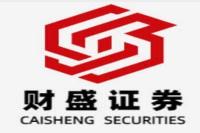LPR Explained: Demystifying the Key Rate for Chinese Loans
Meta Description: Dive deep into the LPR (Loan Prime Rate) in China, understanding its significance, how it shapes loan rates, and its impact on the broader economy. Learn about the nuances of 1-year and 5-year+ LPR, its role in monetary policy, and how it affects borrowers and lenders.
Introduction
The Loan Prime Rate (LPR) in China is a key benchmark interest rate that sets the tone for the entire loan market. It's not just a number; it's a powerful tool that influences everything from mortgage rates to business loans, and ultimately, the health of the Chinese economy. Think of it as the central conductor of the financial orchestra, guiding the rhythm of borrowing and lending in the country.
But navigating the LPR can be tricky, even for seasoned investors. This article aims to be your guide, shedding light on the intricacies of this crucial rate and its impact on borrowers, lenders, and the economy as a whole. We'll cover everything from its history and mechanics to its role in monetary policy and its implications for you as an individual.
Understanding the LPR
The What, Why, and How of the LPR
The LPR, or Loan Prime Rate, is a benchmark interest rate released by the People's Bank of China (PBOC), the central bank of China. It reflects the average lending rate charged by major Chinese banks, effectively serving as a reference point for interest rates on various loans. The LPR is particularly important for:
- Mortgages: The 5-year+ LPR is used for mortgages, meaning it directly impacts the cost of homeownership for millions of Chinese families.
- Business Loans: The 1-year LPR is often used for business loans, influencing the cost of capital for companies and their investment decisions.
How is the LPR Determined?
The LPR is not a rigid, fixed number. It's determined through a complex process that involves:
- Panel Banks: A group of 21 major banks submits their own internal prime rates, based on their perceived cost of funding.
- Weighted Average: These submitted rates are then weighted based on each bank's lending volume and averaged to form the final LPR.
- PBOC Influence: While the PBOC doesn't directly set the LPR, it has a significant influence through its monetary policy tools.
The Dual Nature of the LPR:
Two LPRs, Two Purposes: The LPR actually comes in two flavors:
- 1-Year LPR: This rate is used for loans with a maturity of one year or less, including business loans, short-term personal loans, and some consumer loans.
- 5-Year+ LPR: This rate is used for loans with a maturity of five years or more, primarily mortgages.
Why Two LPRs?
The different maturities reflect the different ways the LPR influences the market. The 1-year LPR is a more sensitive indicator of short-term changes in interest rates, while the 5-year+ LPR provides a clearer picture of long-term trends, which is particularly important for mortgages.
The LPR and Monetary Policy
The Central Bank's Steering Wheel
The PBOC uses the LPR as a key tool in its monetary policy, much like the Federal Reserve uses the federal funds rate in the United States. The PBOC can influence the LPR in several ways:
- Reserve Requirements: By adjusting the reserve requirements for banks, the PBOC can control the amount of money available for lending, indirectly impacting the LPR.
- Open Market Operations: The PBOC can buy or sell government bonds in the open market to control the money supply, influencing interest rates and ultimately the LPR.
- Interest Rate Guidance: The PBOC can provide guidance to banks on the desired direction of interest rates, which can influence their submissions for the LPR.
The Impact of LPR Fluctuations
Ripples in the Financial Pond
Changes in the LPR can have significant ripple effects throughout the Chinese economy:
- Borrowing Costs: When the LPR falls, borrowing costs for individuals and businesses decrease, potentially stimulating economic activity. Conversely, a rising LPR makes borrowing more expensive, potentially slowing down growth.
- Investment Decisions: Business owners are more likely to make investments when borrowing costs are low, but a high LPR might discourage them.
- Real Estate Market: Changes in the 5-year+ LPR directly impact mortgage rates, which can significantly influence the demand for housing and the overall real estate market.
The LPR and You
Understanding the Personal Implications
The LPR affects you, regardless of whether you're a borrower, a lender, or simply an observer of the Chinese economy:
- Borrowers: If you're taking out a loan, a lower LPR means lower interest payments and potentially more affordable debt. Conversely, a higher LPR means higher payments and more expensive debt.
- Lenders: If you're saving money or investing, a higher LPR might mean higher interest rates on your deposits or fixed income investments. However, a lower LPR might lead to lower returns.
- Investors: Understanding the LPR is crucial for investors who want to make informed decisions about Chinese assets, including stocks and bonds.
FAQ
- How Often is the LPR Released? The LPR is typically announced on the 20th of each month.
- Why is the LPR Important for Mortgages? The 5-year+ LPR is directly linked to mortgage rates, making it a key factor for homebuyers. A lower LPR means lower mortgage payments, making homeownership more affordable.
- Can the PBOC Directly Set the LPR? No, the PBOC doesn't directly set the LPR but influences it through its monetary policy tools.
- What is the Relationship Between the LPR and Inflation? The PBOC uses the LPR to manage inflation. When inflation is high, the PBOC might raise the LPR to cool down the economy. Conversely, a lower LPR can stimulate economic activity and potentially lead to higher inflation.
- How Can I Track the LPR? You can find the latest LPR announcements on the website of the People's Bank of China or reputable financial news websites.
Conclusion
The LPR is more than just a benchmark interest rate; it's a powerful tool that shapes the landscape of Chinese finance. It influences borrowing costs, investment decisions, and even the value of your home. Understanding the LPR is crucial for individuals, businesses, and investors alike who want to navigate the Chinese economy effectively. By staying informed about the LPR and how it impacts your personal finances, you can make smarter decisions and take control of your financial future.



